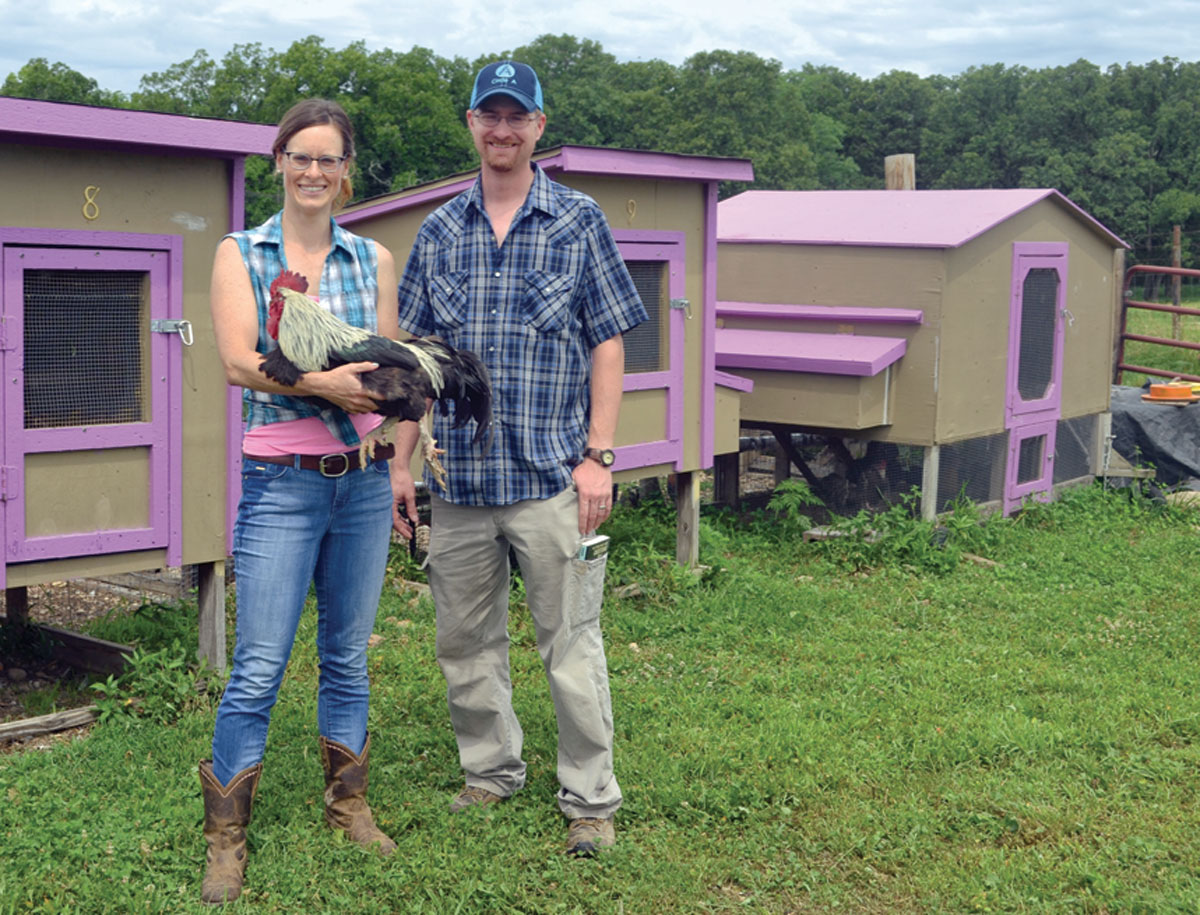
Al and Pat Chapman’s farm is nestled in a valley outside of Anderson, Mo. Pat said, “When Al’s grandfather first drove on this land over 100 years ago, he was eye-to-eye with a walnut tree that now towers over the house and protectively shades it during the hot summer months.” The original Chapman homestead was 80 acres but divided during the Depression by a WPA project road. Later the acreage was expanded to 120 as Al grew up. When Al took over the farm, he added more acreage until now the Chapman farm is 340 acres and home to a commercial cattle herd.
Al spent 37 years at the University of Kansas Medical Center as Professor, Dean and Vice Chancellor. When he made the decision to “retire,” Al devised a plan that would allow him to continue his passion for medical affairs by being Chairman of ACCESS Family Care, a partially federally funded family care services network of clinics in several counties geared to help those with no or inadequate insurance coverage. Al is a member of the Board of Trustees of Crowder College and chairman of the McDonald County Historical Society.
The center of his daily life, however, he reserved for raising his commercial herd. Al said, “I never really left farming behind me because I helped my dad on weekends and learned what I needed to know to carry on the farming tradition. During that time I gained critical knowledge beyond what I had learned in childhood.” Al also admitted that he didn’t leave his job in order to get up in the dark and have every minute of every day crammed with more than he could get done. Pat is the early bird and one of the joys of Al’s retirement life is waking up to the smell of coffee.
Management of time and resources characterizes the Chapman operation. The herd is comprised of 60 Angus mommas serviced by a Limousin/Angus bull and a previous Angus bull that has recently been sold and replaced by another younger Limousin/Angus cross. Before a recent sale, the herd totaled 150.
Al said, “My grandfather grew up in the era where every farm had a variety of animals and a substantial garden because you had to be self-sufficient. Every resource had to be used wisely.” Consequently, one of Al’s philosophies is to keep labor to a minimum which also means maintaining a herd size he can care for mostly by himself. Al said, “Those times I need help, I am blessed with wonderful neighbors and friends. Without them, the cattle operation would be much more difficult.”
Another of Al’s strategies to minimize labor while maintaining self-sufficiency is raising his own hay. He has a separately fenced 40-acre hayfield which usually is sufficient for his needs. He cuts the hayfield once and uses the area in the fall for pasture. Al said, “I get more value by opening that pasture up and usually don’t feed any hay until December because I have enough acreage to sustain my herd.”
Al’s pastures are mostly fescue with some clover and fertilized with commercial pellet fertilizer though a quick dress of liquid nitrogen is occasionally applied in the fall. Al’s land management plan also includes having only perimeter fencing around his pastures in order to minimize fencing labor. Al said, “I don’t need extra fence work and dividing with cross fencing means more work and more maintenance.”
When Al’s dad farmed, he preferred Angus so Angus cattle were part of Al’s upbringing and FFA experiences thereby influencing his decision to start with Angus. Through analysis of the operation Al now believes having one quarter Limousin calves like his current calf crop provides the best commercial animal for him. He also has the bulls with the cows all of the time which eliminates time management issues caused by running a controlled breeding program and uses natural breeding because it is less time-consuming than AI or ET. The result is a marketing cycle involving 20 or fewer calves at a time.
A final result of Al’s land and animal management program is an evolution to raising grass-fed beef. While Al supplements with minerals and with cubes in the winter, eliminating supplementary grain streamlines his operation and helps fill a much desired commercial niche. Al said, “What works for me would not necessarily work for anyone else. Each cattleman has to find the best system for his own land and herd.”
The Chapman’s have four children and five grandchildren ages 6 through 21. Unfortunately, none of them live really close by though the family is close knit and gathers for holidays. Pat said, “While none of our children show a serious interest in cattle, our 6-year-old grandson, John, would live here if he could.”







